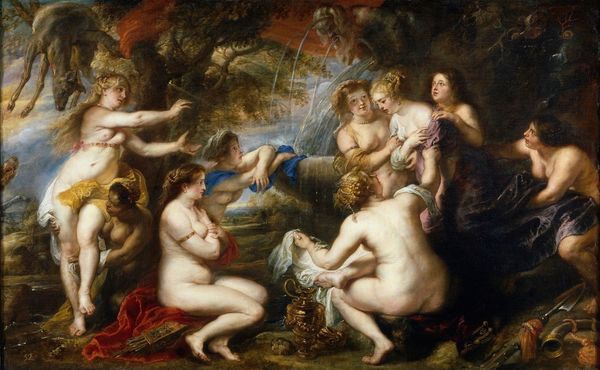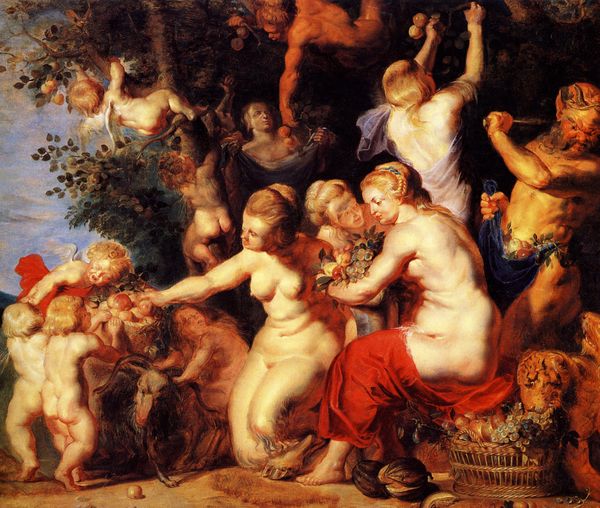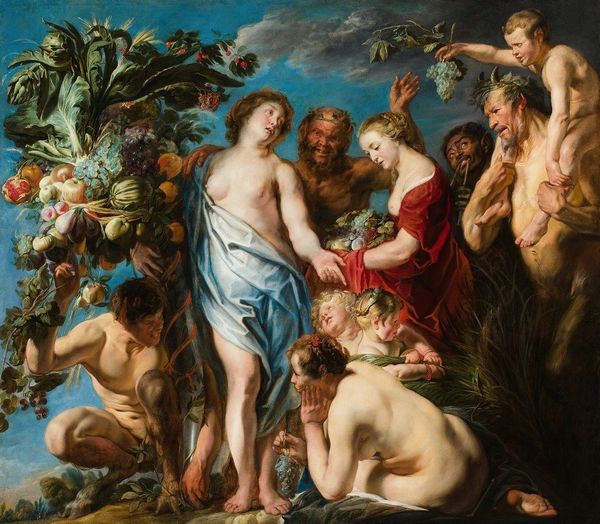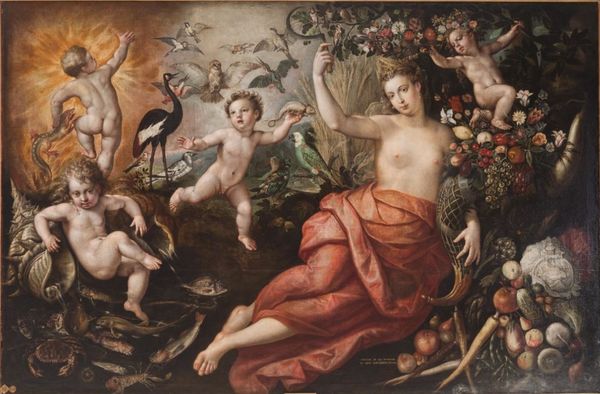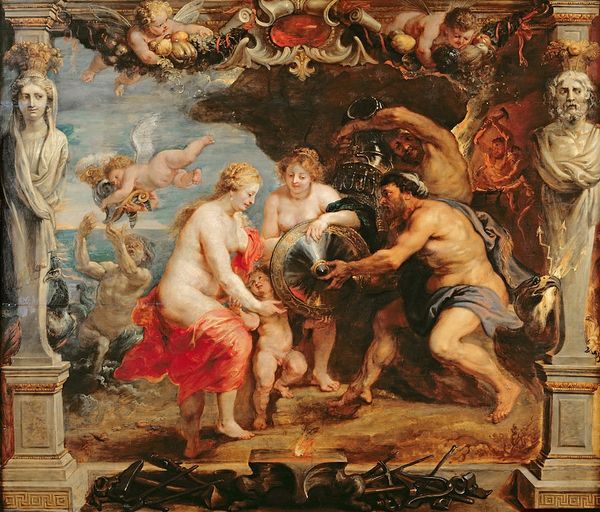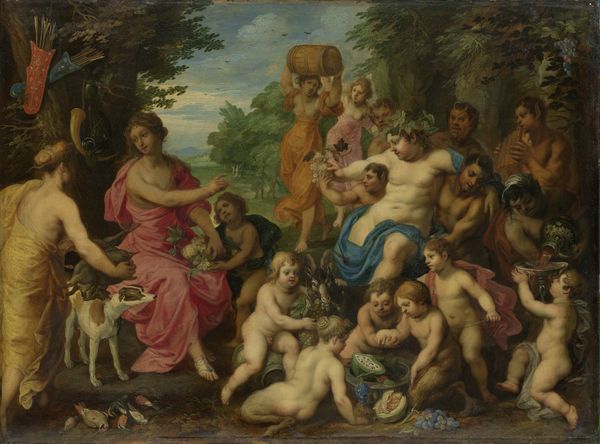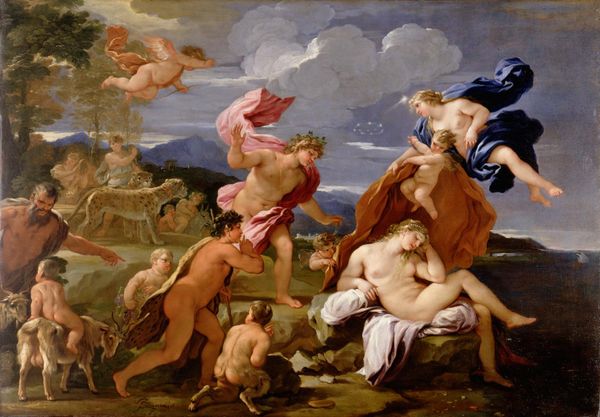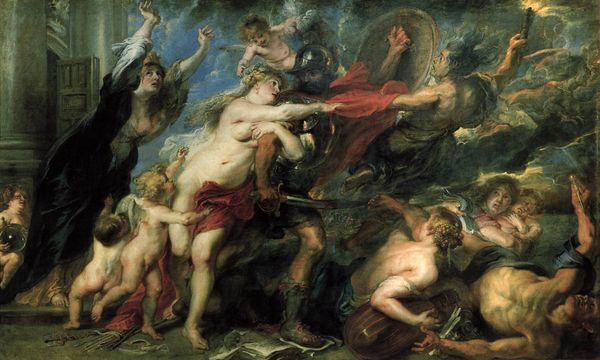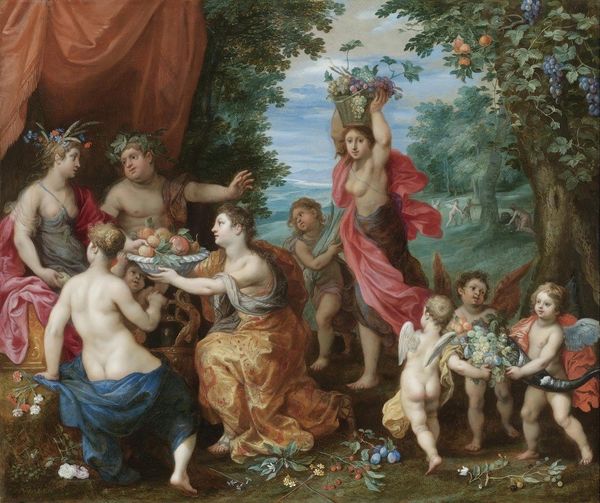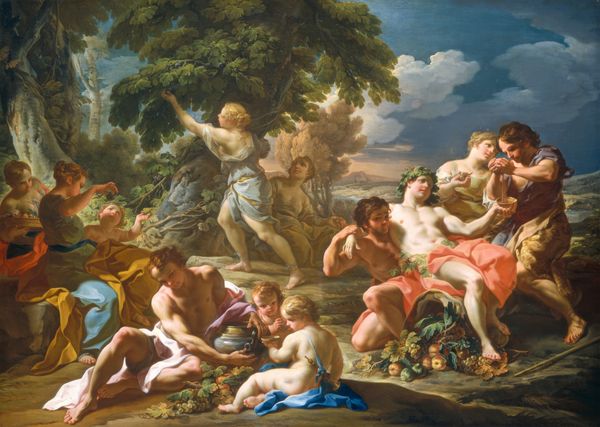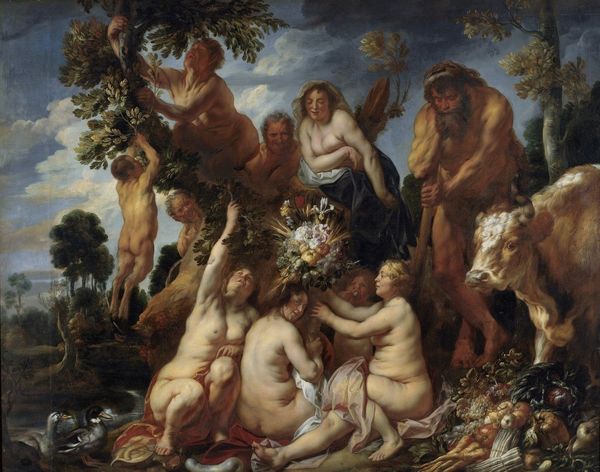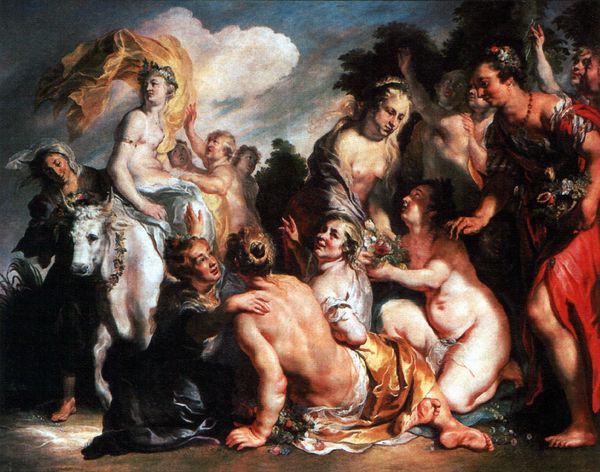
oil-paint
#
portrait
#
allegory
#
baroque
#
oil-paint
#
figuration
#
oil painting
#
group-portraits
#
flemish
#
mythology
#
history-painting
#
nude
Dimensions: 204 x 298 cm
Copyright: Public domain
Curator: Rubens’ "Allegory on the Blessings of Peace," created around 1630, presents a fascinating concentration of figures. What's your first read? Editor: Abundance. Overwhelming abundance. A cornucopia not just of fruit, but of bodies, textures, and meanings tumbling over each other. It feels…excessive. Curator: I'd agree with that reading, especially when focusing on the painterly brushwork. The rich, textured application of paint, particularly noticeable in the draperies and flesh tones, contributes to that feeling of luxuriance, perhaps even excess. The composition itself, with its dynamic diagonals and interwoven figures, builds up a strong sense of drama. Editor: And what exactly are we witnessing here? I see nudes, children, soldiers… is it some kind of mythological scene? Curator: Precisely. Venus, goddess of love, and Pax, goddess of peace, are the central figures. Notice how Venus is flanked by figures embodying the arts and prosperity, while Mars, the god of war, is driven away by Peace. The symbolism of the central figures is clear but observe that the selection of the allegorical symbols is drawn from classical culture to provide a layered meaning, for an elite 17th-century viewer. Editor: So, it’s a kind of political statement. The vanquishing of war in favor of prosperity and art? Curator: Indeed. It's been suggested that this canvas reflects the hope for peace during the time. Rubens had intimate relationships with Europe's rulers and its intelligentsia and worked for peace. But think about the recurring symbol of overflowing: breasts, cornucopia. Even, I'd argue, the over-full frame, contributing to a feeling of sensory experience—that’s what Rubens does well in many works. Editor: The more I look at it, the more it feels deliberate, from the light playing on Venus to the darkened visage of Mars, fleeing from an idealized abundance. Curator: Absolutely. The tension is striking. This painting offers a complex view. One level is Rubens using composition, form and brushstroke to deliver something sensory; another is to present peace as not just the absence of conflict but a thriving state nourished by culture. Editor: It certainly stays with you, prompting thoughts about prosperity, conflict, and the complex symbols that societies embrace. Curator: Yes, "Allegory on the Blessings of Peace" speaks volumes, even today, offering layers for sustained aesthetic thought and deeper interpretations.
Comments
No comments
Be the first to comment and join the conversation on the ultimate creative platform.
